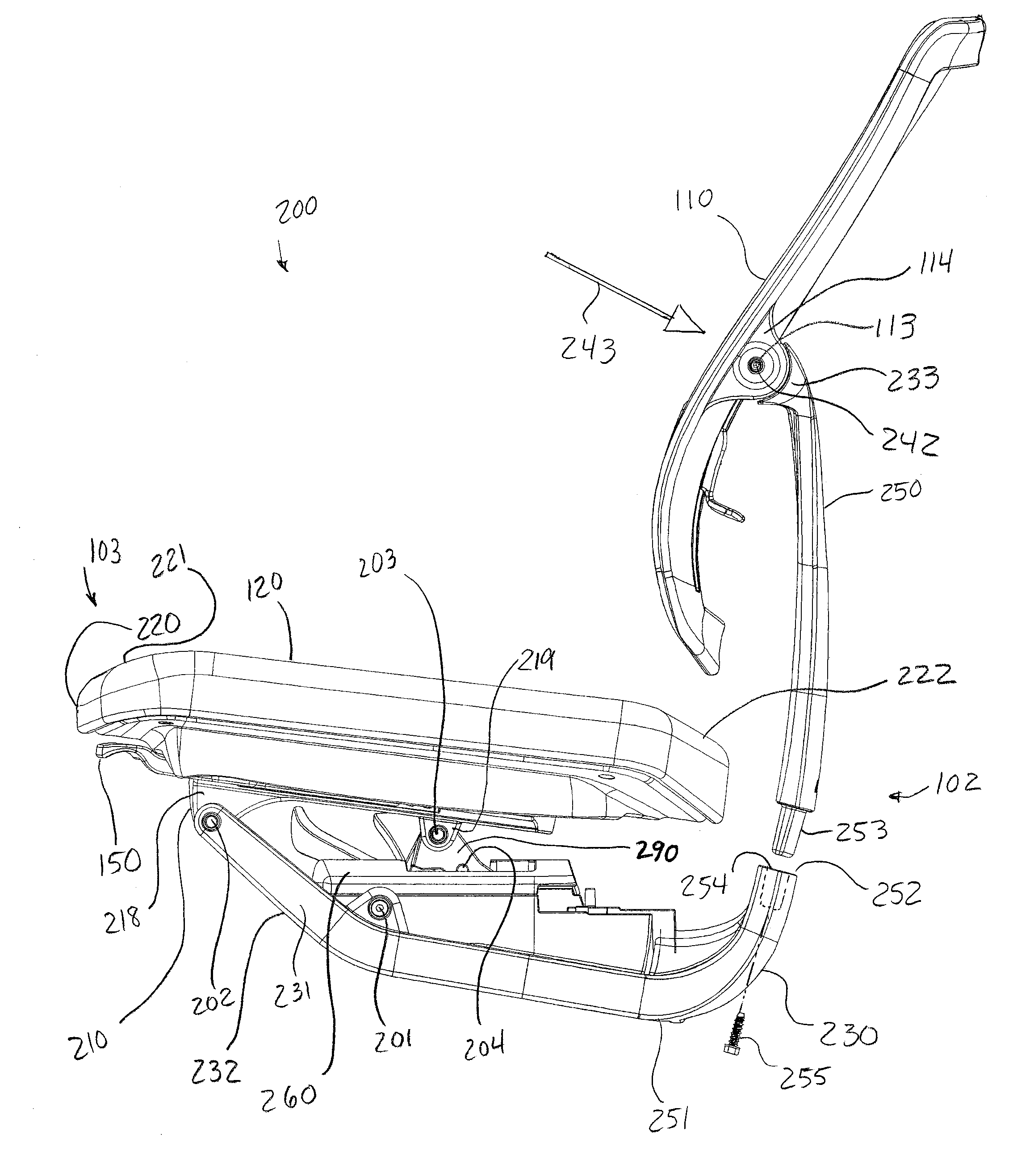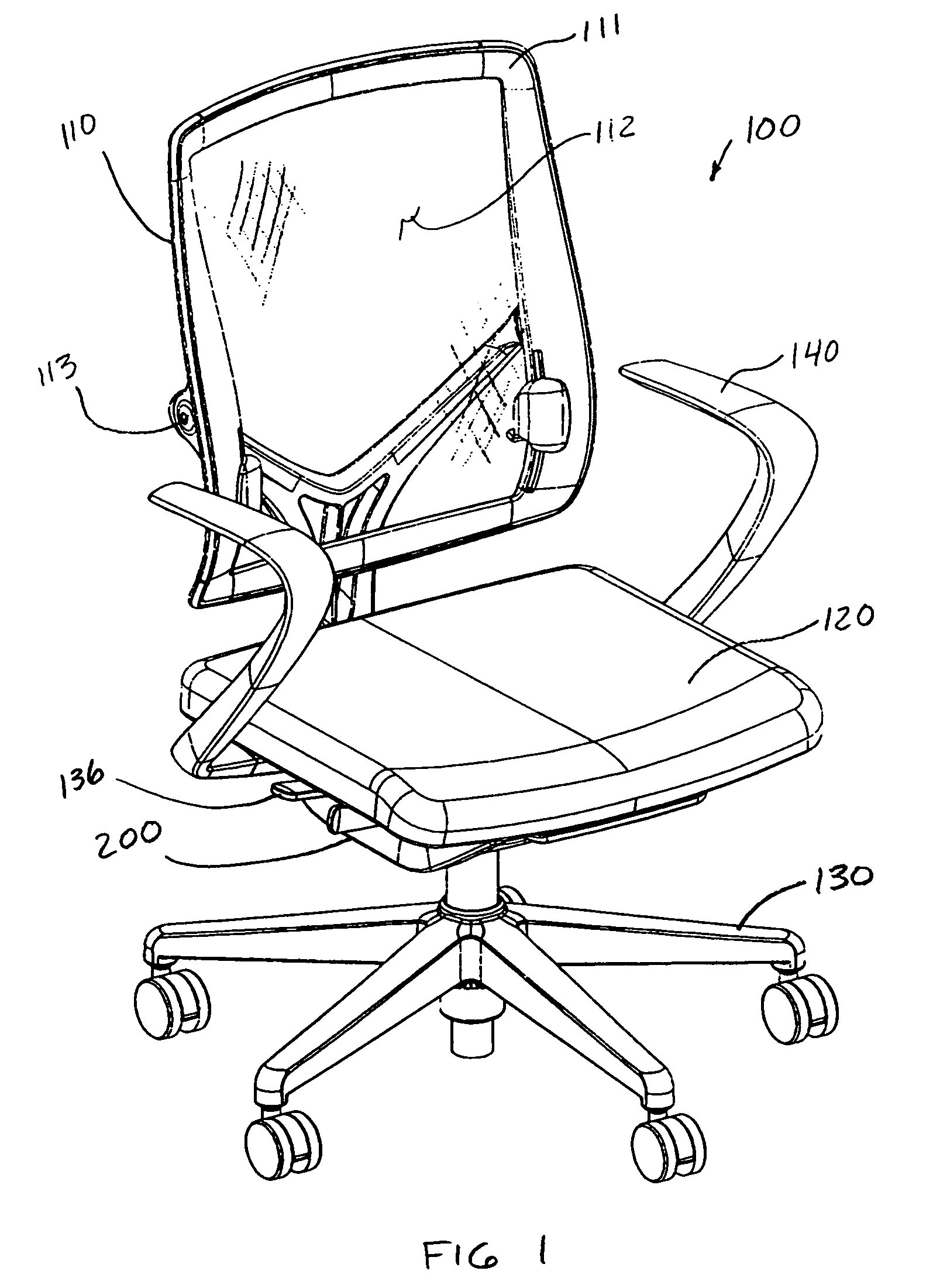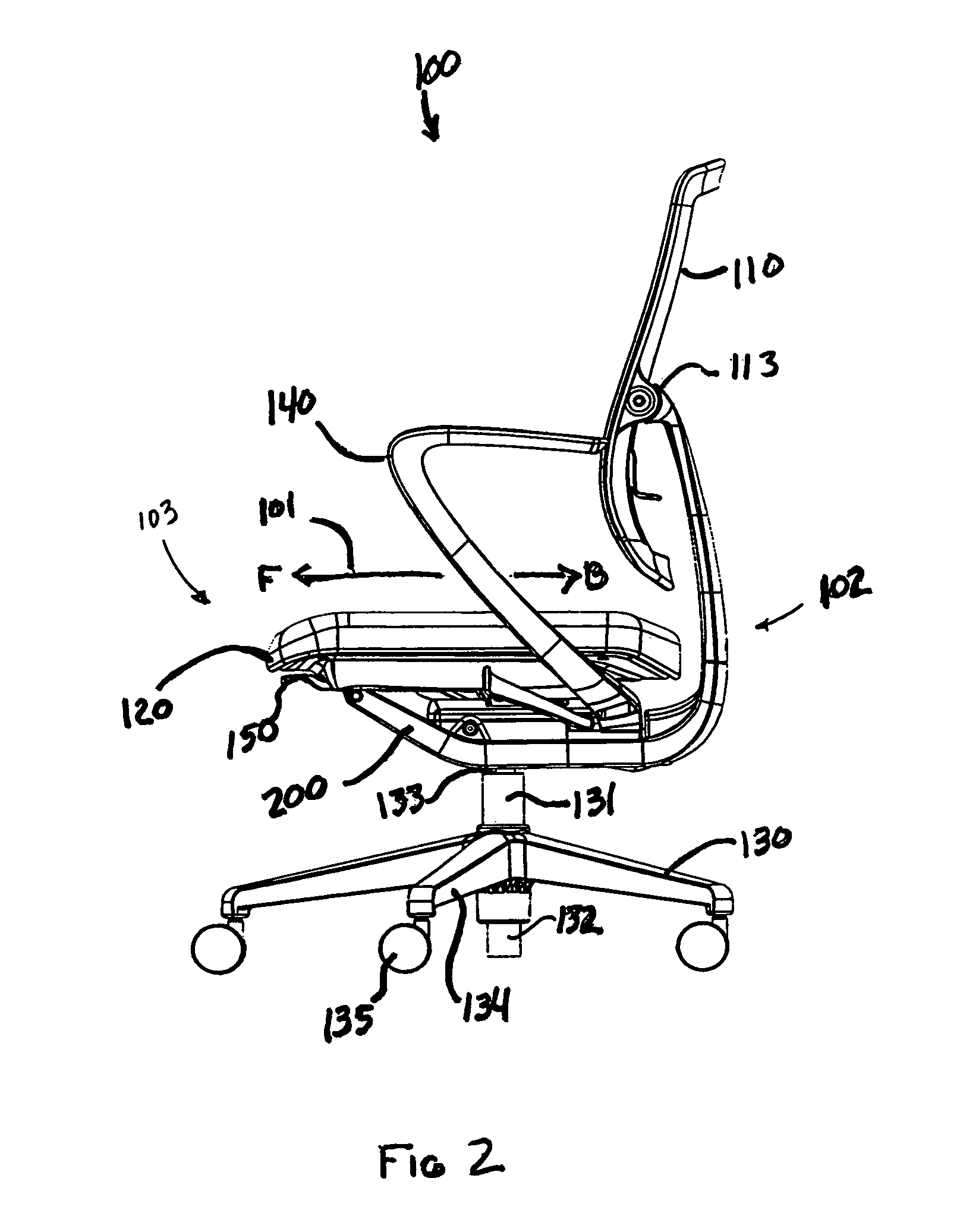Reclining chair with enhanced adjustability
a reclining chair and enhanced technology, applied in the field of ergonomic seating, can solve the problems of difficult adjustment, difficult adjustment, and inability to provide visual or tactile feedback to users, and achieve the effect of facilitating the adjustment of resistan
- Summary
- Abstract
- Description
- Claims
- Application Information
AI Technical Summary
Benefits of technology
Problems solved by technology
Method used
Image
Examples
Embodiment Construction
[0044]With reference to the attached Figures, it is to be understood that like components are labeled with like numerals throughout the several Figures. Unless otherwise specified, the components described herein with respect to the present invention may be formed from any suitable material and by any suitable manufacturing method. For example, parts may be formed from plastic, such as glass-filled nylon or other moldable materials, or from die-cast aluminum.
[0045]FIGS. 1-3 show a first embodiment of a reclining chair 100, and FIGS. 4-6 show a second embodiment of a reclining chair 105, in accordance with the present invention. The first chair 100 includes a back 110, a seat 120, a base 130, arms 140 and a control mechanism 200. The second chair 105 includes a back 115, a seat 120, a base 130, arms 145 and a control mechanism 200. The backs 110, 115, the seats 120 and the arms 140, 145 all attach to the control mechanisms 200, which are mounted on the bases 130. In FIGS. 1, 2, 4 and...
PUM
 Login to View More
Login to View More Abstract
Description
Claims
Application Information
 Login to View More
Login to View More - R&D
- Intellectual Property
- Life Sciences
- Materials
- Tech Scout
- Unparalleled Data Quality
- Higher Quality Content
- 60% Fewer Hallucinations
Browse by: Latest US Patents, China's latest patents, Technical Efficacy Thesaurus, Application Domain, Technology Topic, Popular Technical Reports.
© 2025 PatSnap. All rights reserved.Legal|Privacy policy|Modern Slavery Act Transparency Statement|Sitemap|About US| Contact US: help@patsnap.com



